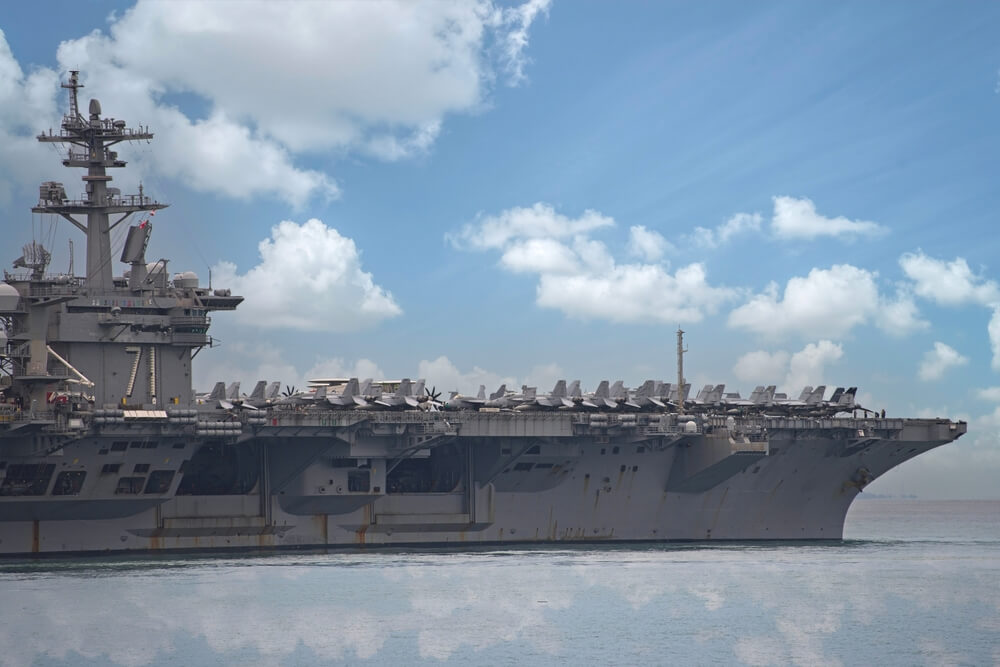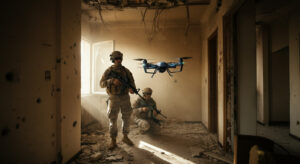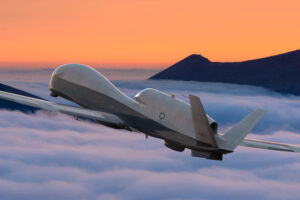The aircraft carrier USS Abraham Lincoln has arrived near the Red Sea, after rushing to the region on an accelerated transit from Guam. Carrier Air Wing Nine brings fresh squadrons of airpower with Marine Corps F-35Cs and the most advanced F/A-18 Super Hornets to help U.S. Central Command deter Iran. USS Theodore Roosevelt will also stay to keep two aircraft carriers in place after the recent Hezbollah strikes, Defense Secretary Lloyd Austin said.
It’s a thrilling display of flexible U.S. military power, but the deployment is also a warning signal. Sending this carrier at high speed to the Middle East has created an aircraft carrier gap in the Pacific. The carrier fleet is stretching to perform its global role.
The gap is temporary and due in part to the swap out of the aircraft carrier normally homeported in Japan. But it’s also a sign of how taskings are piling up. Not surprisingly, China picked the moment to bring its aircraft carrier Shandong back to the Philippine Sea. There have been days this summer when only China had aircraft carriers underway in the Pacific.
Four to five carriers to maintain presence
Since the Hamas attack on Israel on Oct. 7, 2023, it has taken no less than four aircraft carriers to maintain the Red Sea presence. By the end of the year, that number may grow to five. The entire U.S. aircraft carrier fleet consists of just 11 ships.
The immediate problem, of course, is Houthi attacks on shipping in the Red Sea and the risk of another big drone and missile strike on Israel conducted by Iran and its proxies. By supplying the Houthis, stoking terrorists across the Middle East and mounting attacks on Israel, Iran has effectively forced the U.S. Central Command to keep an aircraft carrier constantly deployed near the Red Sea.
The USS Gerald R. Ford was the first carrier on station after the Hamas attack on Israel. As the fighting in Gaza intensified, the Ford was extended for 76 days and did not reach homeport until Jan. 17, 2024, making for an eight-month deployment.
“Sometimes our greatest achievements are the bad things we stop from happening,” Defense Secretary Austin told the crew of the Ford on a visit while underway last December. “In a moment of huge tension in the region, you all have been the linchpin of preventing a wider regional conflict.”
With the carrier acting as the linchpin, Austin had to keep one in place. The second carrier to join the fight was USS Dwight D. Eisenhower, deployed Oct. 14, 2023, through July 14.. “Ike” was extended multiple times with minimal port visits, and the strike group caught the brunt of the escalating Houthi attacks. Her aircraft alone expended nearly 60 air-to-air missiles and released 420 air-to-surface weapons. Several aviators were awarded personal medals for defending Ike and the strike group against attempted Houthi attacks on Dec. 31 and Jan. 9.
Next, the USS Theodore Roosevelt relieved Ike to prevent a third extension of the deployment. Since 2020, TR has been deployed for almost 540 days, according to USNI News’ carrier deployment database.
As for the Lincoln, she departed San Diego on July 11 for a Pacific deployment. Then came orders to head for the Middle East, so the carrier plus destroyers USS O’Kane and USS Frank E. Petersen Jr. departed Naval Base Guam on Aug. 8 – leaving a gap in the Pacific.
Finally, the USS Harry S. Truman is scheduled to deploy later this year and could become the fifth U.S. carrier to take up the deterrence role.
Constant pace of combat missions
Far from just showing the flag, the aircraft carriers, their strike groups and air wings have kept up a constant pace of combat operations, intercepting Houthi attacks in the Red Sea and periodically striking land targets. The Houthis attack almost daily. During a one-week period recently, U.S. forces destroyed two Houthi vessels on Tuesday, hit a ground control station in Yemen on Thursday and took out a surface drone on Saturday and an air drone on Sunday.
Destroyers in the weapons engagement zone near Yemen do much of the shooting, but the carrier air wing plays a crucial role in defending against barrage attacks. Steady combat air patrols – day, dusk and night – add a layer of surveillance and on-call firepower to strike active launch sites.
The carrier helped out with the defense of Israel during Iran’s Apr. 13 attack. The carrier also beefs up strike options, which have already been used several times, targeting Houthi missile and drone supply networks and launch sites in Yemen. Most of all, the carrier air wing keeps direct pressure on Iran. It goes without saying that the aircraft also add to U.S. Central Command’s options for targeting Iran if so ordered.
The carriers have done valiant work leading the zone defense in the Red Sea. “We have certainly degraded their ability, no doubt about that,” Vice Adm Wikoff, commander of U.S. Naval Forces Central Command, said about the Houthis.
Yet the aircraft carrier remains the linchpin, with no end in sight.
Opportunity costs in the Pacific to deter China
While successful, the Red Sea action contains notes of warning.
The intense pace of deployments is just a taste of the tempo American aircraft carriers could experience in a scenario with China. The Pacific is arguably even more important than the Red Sea. America’s Navy is back in its historic role of guaranteeing market access for U.S. trade interests – and that spells long-term commitments.
A Chinese takeover of Taiwan would “likely trigger the worst economic shocks experienced in more than a century, unleashing a cycle of repression and diminishing the quality of life for populations across Asia and beyond, with devastating impacts on American interests and Americans’ well-being,” according to a new report from the Baker Institute.
Aircraft carriers would again be linchpins of policy. However, massing carriers in the Pacific for months at a time would deplete the force, making it next to impossible to sustain operations at other points around the globe. If a carrier were damaged in combat and had to return to port, the math would get even worse.
The policy dimensions are complex, but the answer is clear: the U.S. needs more carriers.







